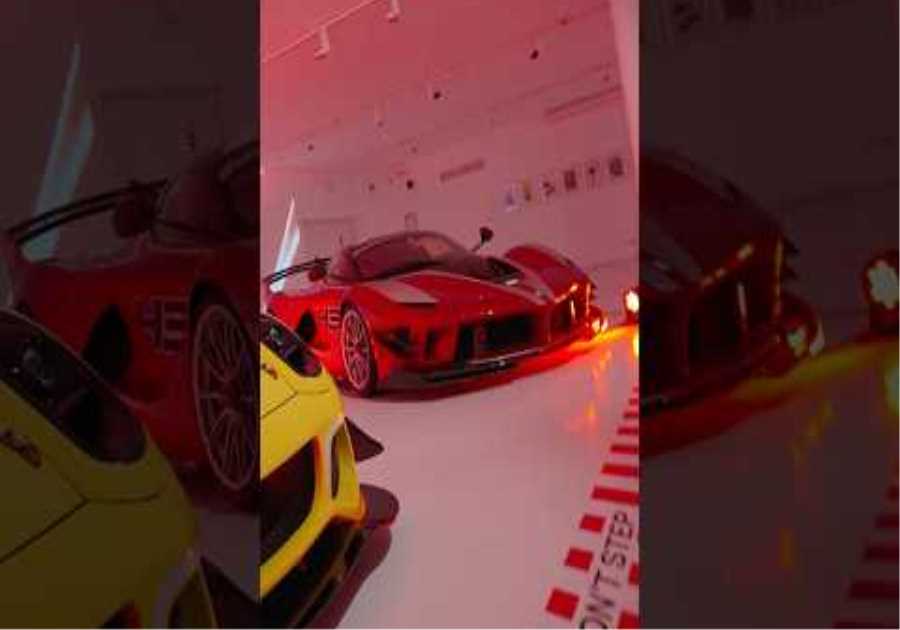
Ferrari is one of the most widely recognized luxury sports car automakers. Being around since 1947, the Italian brand tried its luck in making production cars as well as racing early on. It was successful in both aspects, as we all well know. Today, Ferrari is synonymous with performance, luxury, and elegance.
But the racing roots of Ferrari extend way before the famous 1947 year. The brand’s founder Enzo Ferrari started his career as a race car driver and won several races with Alfa Romeo before founding his own company. Not long after Ferrari was set in motion, the official race car division named Scuderia Ferrari came to be and slowly began to build its reputation in the racing field.
The Ferrari racing team had its ups and downs over the years but continued to grow steadily. As early as 1945, Ferrari introduced a V12 engine that became its signature. A couple of years later, the 125 S or 125 Sport models were born and achieved excellent results in the Rome Grand Prix. After World War II, racing successes only magnified, with Ferrari winning major races such as Mille Miglia in 1948, Le Mans 24 Hour Race in 1949, and many others.
Following these achievements, Ferrari made another big jump in the 1950s — it developed the celebrated Ferrari 500 F2 to win the World Championship. In this article, we’ll take a closer look at the development and specs of this racing icon that holds a special place in Ferrari’s history and fans’ hearts.
Formula 1 In 1952: Changing Regulations And The Arrival Of The Ferrari 500 F2

In the early days of car racing, the World Championship attracted many visitors thanks to the Alfa Romeo and Ferrari F1 dominance. We can only imagine how much fun and thrill people felt watching these two contestants compete back in the day.
However, something peculiar happened in 1952 — Alfa Romeo withdrew from the motorsport. The International Automobile Federation or FIA (translated from French) found itself facing a challenging situation, as the year was looking to be short of entrants. Only Ferrari was ready to compete in the Formula 1 race — most other brands were preoccupied with building road cars. The competition was, after all, quite pricey, and it wasn’t easy for the brands to decide on it.
That’s why FIA finally decided to change things and run according to Formula 2 specifications rather than to Formula 1, so more brands could participate with their single seaters equipped with smaller engines. Ferrari was sitting pretty again in this situation.
Namely, Enzo Ferrari was impressed with the British cars that featured four-cylinder engines and often made the Ferrari V12 models sweat. He instructed Aurelio Lampredi, Ferrari’s engineer back in the day, to make a similar unit for the racing purposes. Hence, the Ferrari racing team got a car specifically designed for the newly formed F1 situation, and it was named the Ferrari 500 F2.
The Racing History Of The Famous Ferrari 500 F2

Initially set at a 2.5-liter version but later equipped with a 2-liter one, the Ferrari 500 F2 four-cylinder engine was mounted behind the front axle to enhance the weight distribution. It was made from alloy, was chain-driven, and had twin-overhead camshafts. All of this brought the Ferrari 500 F2 to the maximum of 185 horsepower.
Generally speaking, the Ferrari’s new Formula 2 racer was quite similar to the previous single seaters. It “only” had an open nose and sported distinct mechanical characteristics, which proved good enough to score some impressive results for the Ferrari racing team.
In terms of racing, the Ferrari 500 F2 achieved the success Ferrari hoped for when trying to design a new racing unit. The competition was fierce in the end, but the Scuderia Ferrari won the first of eight World Championship rounds straight away with the help of Piero Taruffi. The winning streak was later continued by Alberto Ascari, Ferrari’s lead driver, who won the six remaining rounds. At the end of the year, Ascari earned the title of the World Champion.
Another year of racing success for the Ferrari 500 F2 and the driver Ascari was 1953 — the great match of a human and a machine won Ferrari five of nine rounds. However, the Ferrari 500 F2 was surpassed in the final race for the 1953 season. The brand then decided to move on with design updates for 1954 in the form of the 625 F1.
Nevertheless, the Ferrari 500 F2 will always stay the first car that brought Ferrari the World Championship trophy. As one of the most successful Grand Prix cars, the Ferrari 500 F2 will also remain a highly favored classic car among racing enthusiasts.






